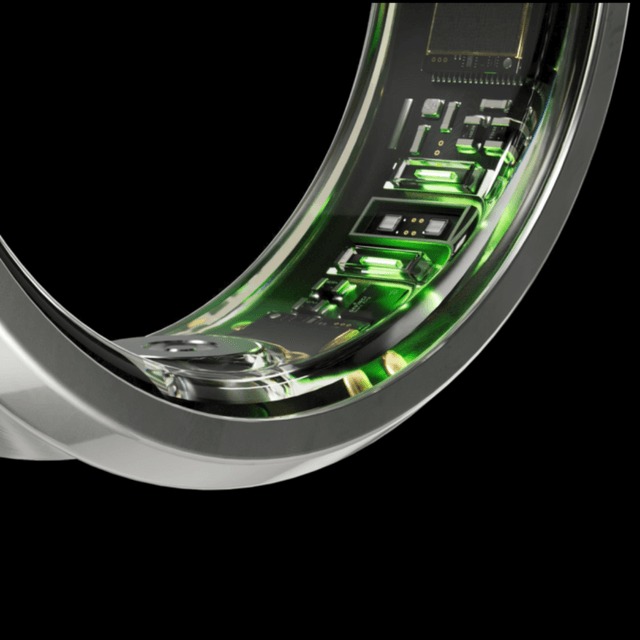Sound Asleep and Fully Connected: How This Smart Ring is Redefining Personal Health Management
In a world where wearables dominate the personal health space, this new smart ring isn’t just another gadget vying for wrist space. Instead, VIV Ring is breaking new ground—or perhaps more fittingly, new soundscapes—as the first of its kind with generative sleep aid sound technology. Unveiled at CES 2025, this innovation promises to not only measure your vitals but also actively improve your well-being in ways that feel both personal and revolutionary. Yet, amid the hype, how far does it really go in transforming health management?
More Than a Ring: A Holistic Health Companion
At its core, this wearable collects and analyzes a robust array of biometric signals, including heart rate, oxygen saturation, heart rate variability, and stress levels. That’s table stakes in the wearable space. But where it outpaces competitors like Oura and Samsung’s offering is its ability to act on that data in real time—specifically through its generative sleep aid sound technology. Imagine your accessory not just telling you how poorly you slept but actively lulling you into a more restorative slumber with AI-curated soundscapes tailored to your biometrics.
Chris Yeh of Blitzscaling Ventures has already pegged smart rings as 2025’s breakout health tech, and this innovation’s unique use of AI-driven sound might just be the catalyst for a seismic shift in how we think about wearables.
Generative Sleep Aid: A Symphony of Science and Serenity
Unlike traditional sound therapy, which relies on pre-recorded or synthetic sounds, this smart ring’s generative sleep aid technology creates personalized soundscapes in real time. By analyzing sleep cycles, stress levels, and biometric data, the device curates a combination of natural sounds—from ocean waves to tranquil rainfall—enhanced by monaural and binaural beats designed to promote relaxation and deep sleep.
This shift from passive monitoring to active intervention is where the device truly shines. Sleep improvement is no longer a vague promise backed by generic advice; it’s a curated, responsive experience tailored to each individual.

photos: @VIV™ Ring by @VIV Health
Design That Delivers Comfort and Class
While its internal workings are groundbreaking, the ring’s design doesn’t play second fiddle. With a scratch-resistant concave center and diamond-cut chamfered edges, it’s as aesthetically pleasing as it is functional. Comfort has also been prioritized, addressing a common gripe with competitors like the Galaxy Ring’s convex sensors.
This fusion of form and function positions it not just as a health device but as a luxury accessory, elevating its appeal to a broader market.
Simplicity Meets Sophistication in the App
One of the recurring criticisms of wearable tech is the complexity of its accompanying apps. The app for this ring aims to turn this pain point into a competitive advantage. With a streamlined interface designed for intuitive use, it provides clear, actionable insights without the need for endless scrolling or deciphering complex graphs. This simplicity could be a key factor in winning over users who’ve been alienated by the clunky interfaces of rival products.
The Bigger Picture: Wellness Meets Medicine
Beyond wellness, the company behind this innovation is setting its sights on medical applications. Collaborating with Gangnam Severance Hospital and industry veterans like Dr. Won-Seok Jang, they’re pushing toward regulatory approval for a pro version, a medical-grade device capable of measuring blood pressure and detecting atrial fibrillation. This expansion into clinical-grade functionality could make them a major player not just in consumer wellness but also in the medical device market.
Critical Questions for the Future
Despite its impressive credentials, this device raises some critical questions. For one, how well will its generative soundscapes hold up in real-world use? Personalized sleep sounds are an intriguing concept, but individual preferences and the subjective nature of relaxation might limit their efficacy. Moreover, as with any wearable, data privacy remains a pressing concern. With so much personal health data being collected, the company will need to ensure airtight security measures to maintain user trust.
Finally, there’s the issue of accessibility. Luxury design and advanced features often come with a hefty price tag. While this ring may be positioned as a premium product, will it alienate a broader audience that could benefit from its innovations?
By moving beyond mere biometric measurement and actively enhancing well-being through generative sound, it’s carving out a unique niche in the crowded wearable market. Its intuitive design, both physical and digital, further solidifies its position as a frontrunner in personal health tech.

